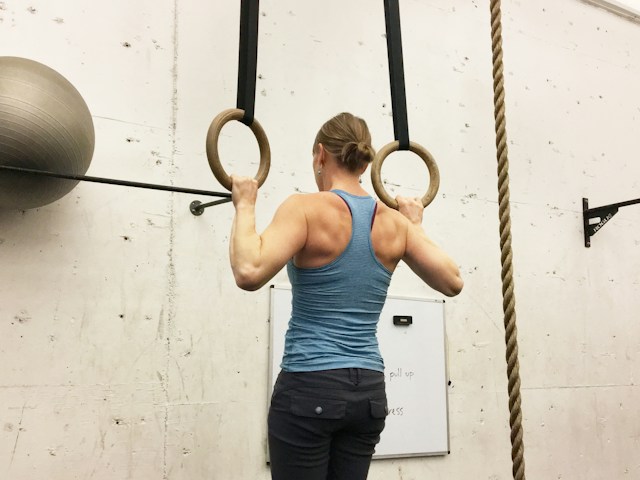Back workout fundamentals: Key exercises for a strong and healthy back
Starting a back workout routine is a fundamental step towards overall body strength and wellness. It’s essential to approach back exercises with a focus on proper form, balanced strength development, and safety. The back muscles are crucial in posture, daily movements, and athletic performance. This guide offers a comprehensive pathway to strengthen their back effectively, with a variety of exercises that emphasize technique, progressive overload, and recovery. Embark on this journey to unlock the potential of your back muscles, enhance your physical capabilities, and achieve a more resilient and healthier body.
What is a good back workout?
A good back workout targets all the major muscles in the back, including the latissimus dorsi, rhomboids, trapezius, and the lower back muscles. It should incorporate a mix of exercises that work the back from different angles to promote balanced muscle development. Key components of a beginner’s back workout include exercises like lat pulldowns, rows, and supermans, which are effective yet manageable for those just starting out. Emphasis should be placed on mastering the correct form to maximize benefits and minimize the risk of injury. [1]
Lat pulldowns: Foundation for a strong back
Lat pulldowns are a staple in back workouts, especially beneficial for beginners. They primarily target the latissimus dorsi, the broadest muscle in the back, which is crucial for overall back strength and appearance. Proper form involves sitting with a straight back, pulling the bar down towards the chest, and slowly releasing it back up. It’s important to avoid leaning too far back and using momentum instead of muscle strength.
Row variations for mid-back development
Rows come in various forms, such as seated cable rows, dumbbell rows, and bent-over rows. Each targets the mid-back muscles, including the rhomboids and the middle and lower trapezius. The key to effective rowing is to pull with the back muscles rather than the arms and to maintain a stable core throughout the movement.
Superman exercise for lower back strength
The Superman exercise is an excellent way to strengthen the lower back, an area often neglected in typical workouts. This bodyweight exercise involves lying face down and simultaneously lifting the arms and legs off the ground, holding for a few seconds, and releasing. Keeping the head and neck in a neutral position is crucial to avoid strain.
Incorporating deadlifts for comprehensive back development
Deadlifts are a powerful exercise that works the entire back. They engage the lower back, traps, lats, and also involve other muscle groups like the glutes and hamstrings. Beginners should start with light weights to master the technique, which involves a hip-hinge movement, keeping the back straight, and driving the hips forward to stand up.
Building a routine: Frequency and volume
Beginners should aim to train their back 1-2 times per week, allowing adequate recovery between sessions. The volume, or total number of sets and reps, should start low and gradually increase as strength and endurance build. A balanced routine might include 3-4 different exercises, with 3-4 sets of 8-12 reps each.
Safety First: Avoiding common back workout mistakes
One of the most common mistakes in back workouts is using too much weight, leading to poor form and potential injuries. Beginners should focus on mastering the form with lighter weights before progressing. It’s also crucial to avoid overtraining the back, which can lead to muscle imbalances and chronic strain.
Measuring Progress: Strength, endurance, and posture
Progress in back workouts can be measured by improvements in strength (ability to lift heavier weights), endurance (performing more reps or sets), and enhanced posture and back appearance. Regularly tracking workouts can help in identifying progress and areas that need focus.
Conclusion
Back workouts are a vital component of a well-rounded fitness regimen. Starting with basic exercises and focusing on proper form and technique is key. Gradually increasing intensity and volume, while ensuring adequate recovery, will lead to significant improvements in back strength, posture, and overall fitness. For more examples on how to set up a workout routine that covers all the necessary parts read more on exercise routine for beginners.
Key takeaways
| Aspect | Summary |
|---|---|
| Exercise Variety | Engage the entire back with diverse exercises |
| Technique Mastery | Focus on form for effective and safe workouts |
| Progressive Training | Gradually increase intensity for muscle growth |
| Balanced Recovery | Prioritize rest and nutrition for recovery |
FAQ
How long does it take to see results from back workouts?
The time it takes to see results from back workouts varies depending on individual fitness levels, workout intensity, and consistency. Generally, noticeable improvements in strength and posture can be observed within 4-6 weeks of consistent training.
Can back workouts help reduce back pain?
Yes, strengthening the back muscles through targeted workouts can help reduce back pain. Stronger muscles support the spine better, alleviating pressure and strain. However, it’s important to consult with a healthcare professional before starting any workout regimen, especially if you have chronic back pain. [2]
How often should I train my back?
It would be best if you aimed to train their back 1-2 times per week. This frequency allows adequate recovery time between sessions, which is crucial for muscle growth and preventing overtraining. Training your back one to two times a week also allows for a greater opportunity to be able to train the rest of your body to achieve a good physique with equal proportions.
What are some signs of overtraining the back?
Some signs of overtraining include prolonged muscle soreness, decreased performance, fatigue, and sometimes even back pain. If you experience these symptoms, it may be time to reduce the intensity or frequency of your workouts and focus more on recovery. [3]
Sources
- Source 1: healthline.com
- Source 2: mayoclinic.org
- Source 3: hss.edu

